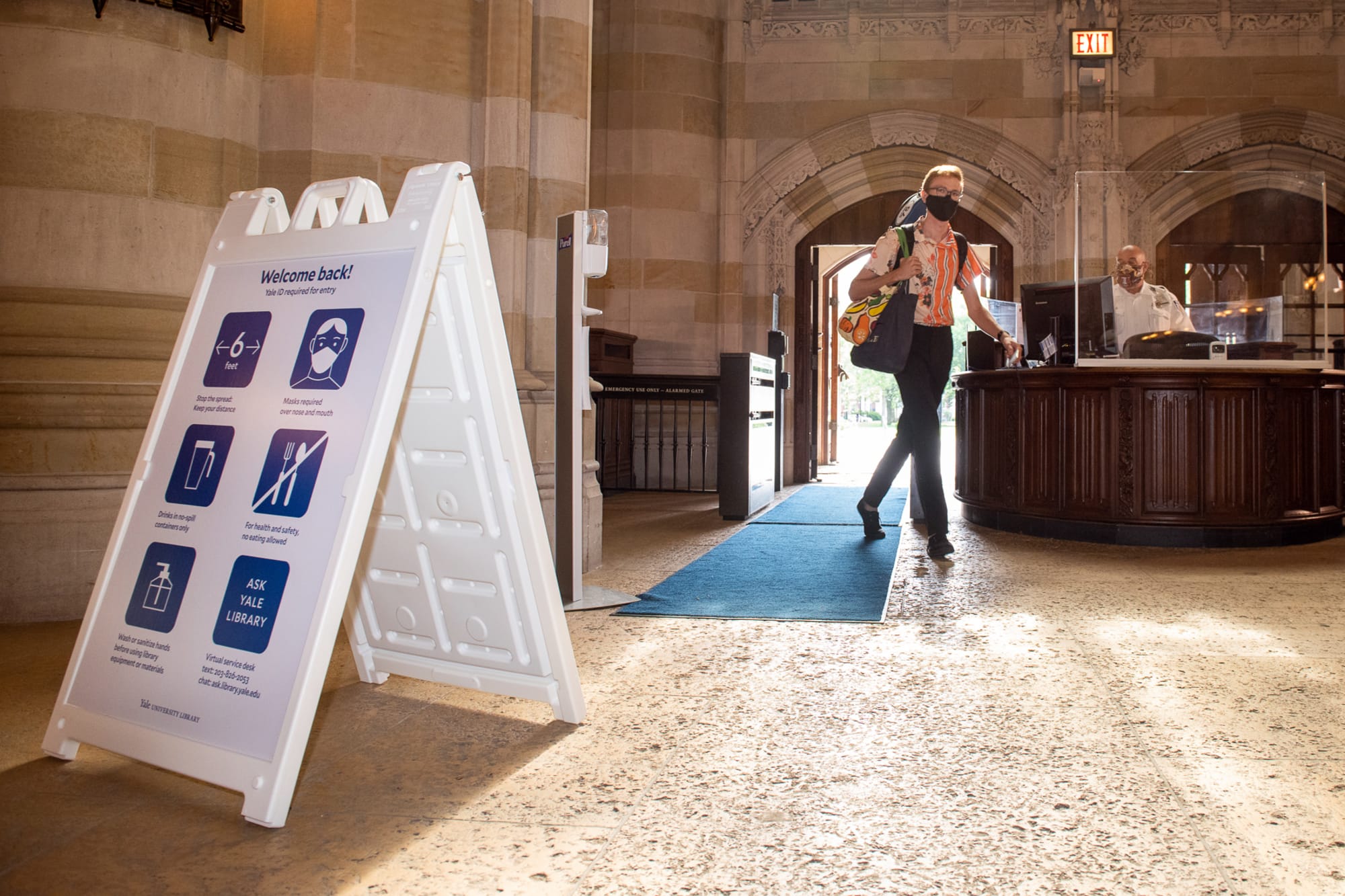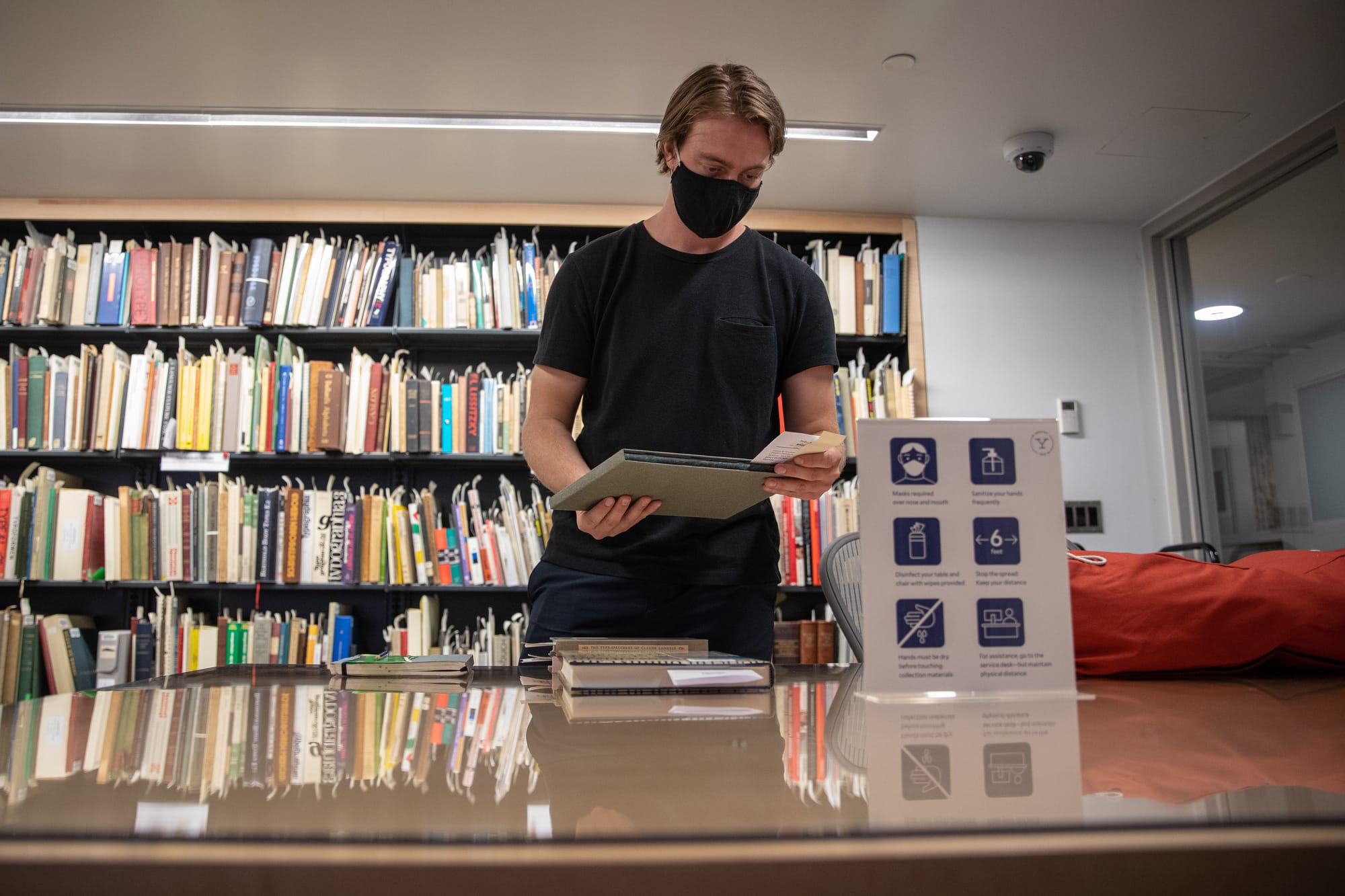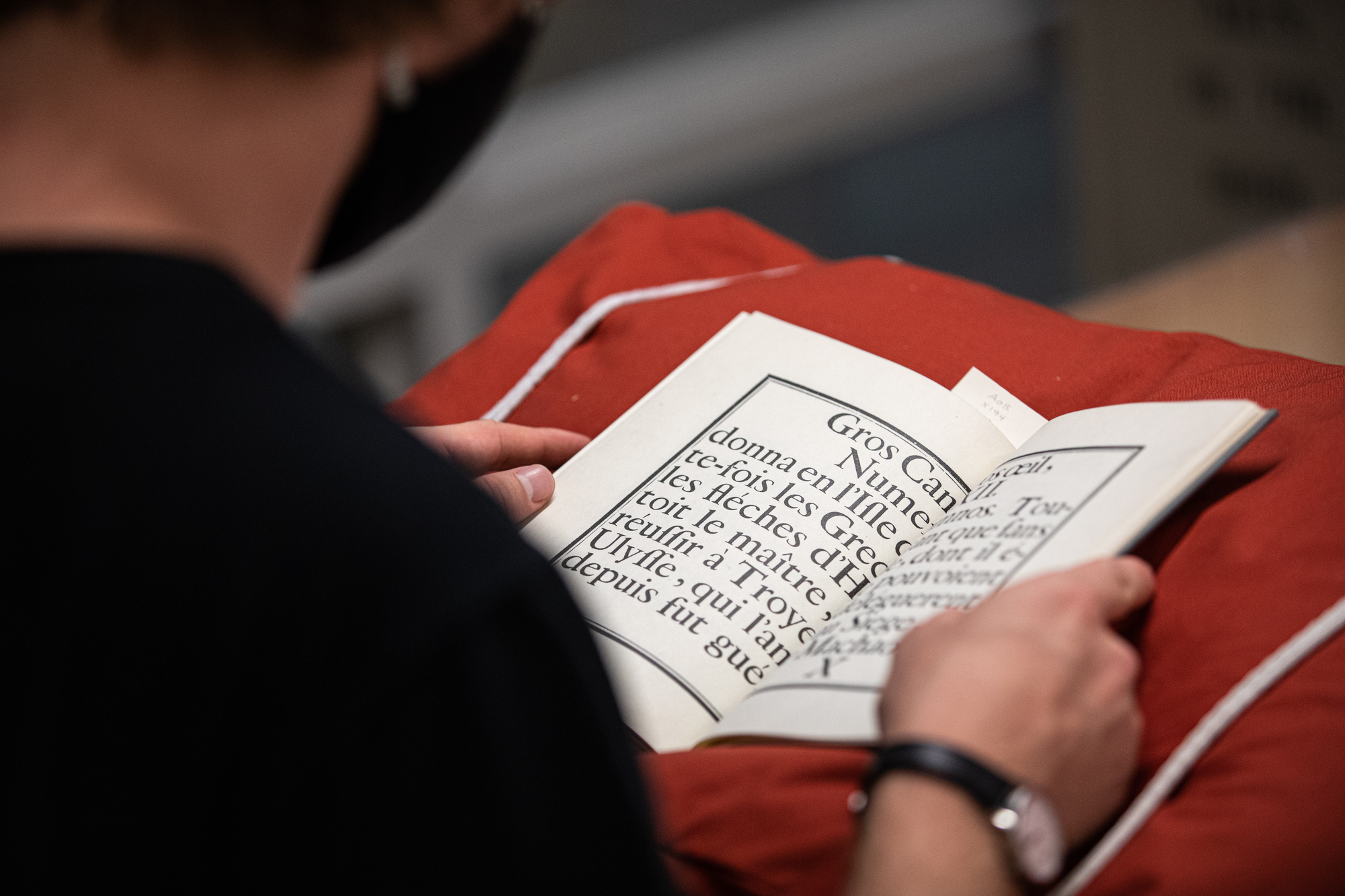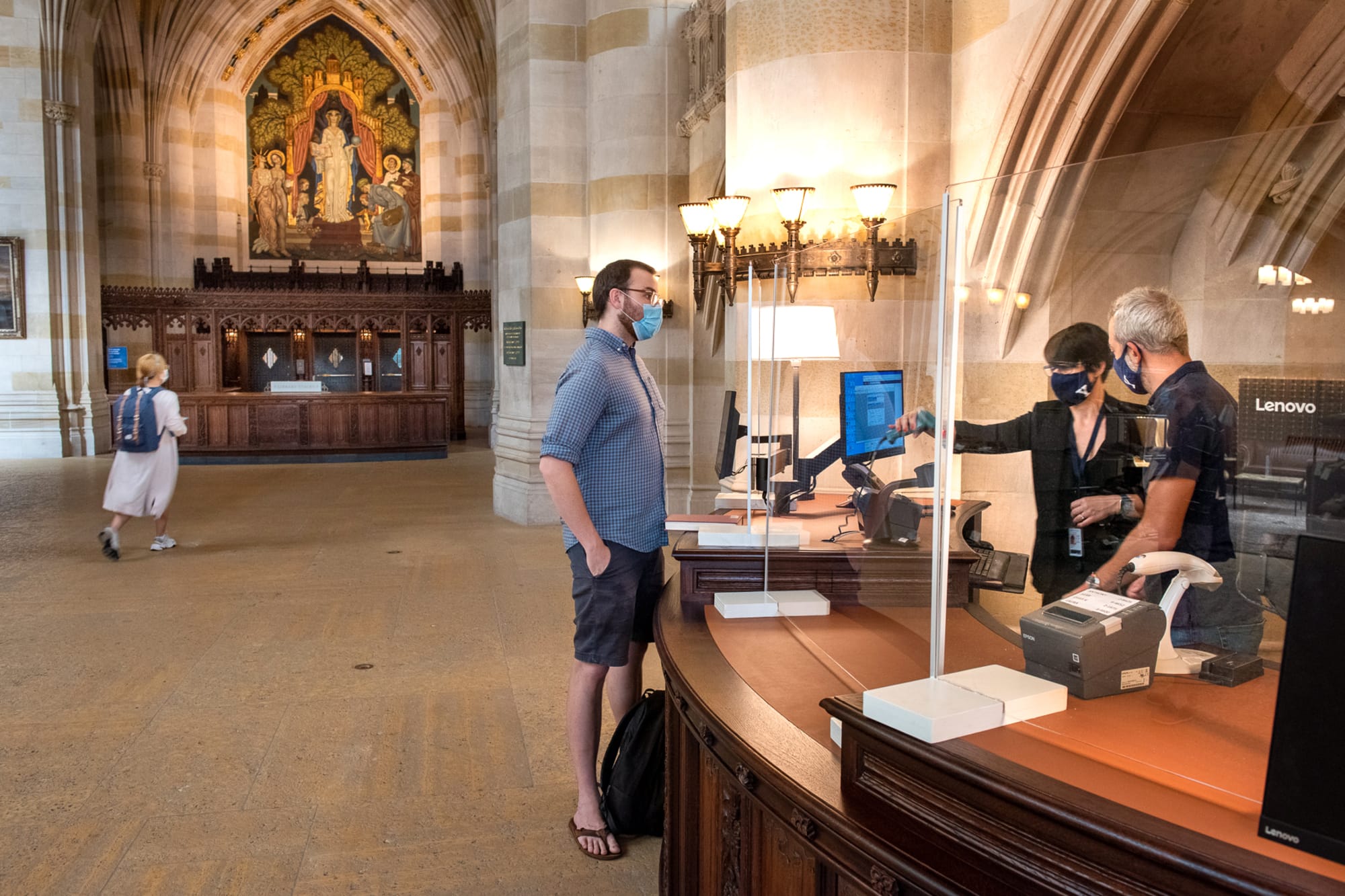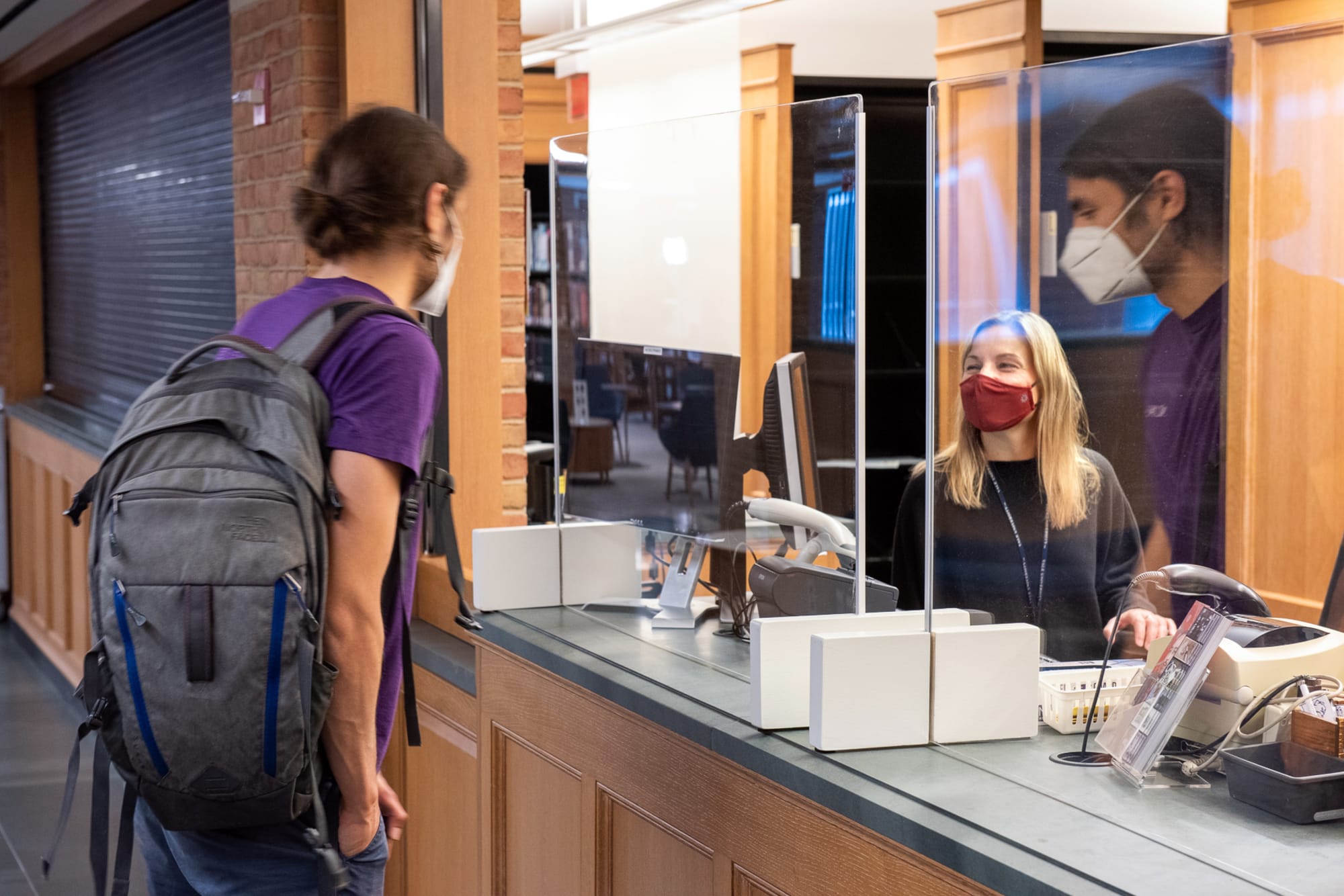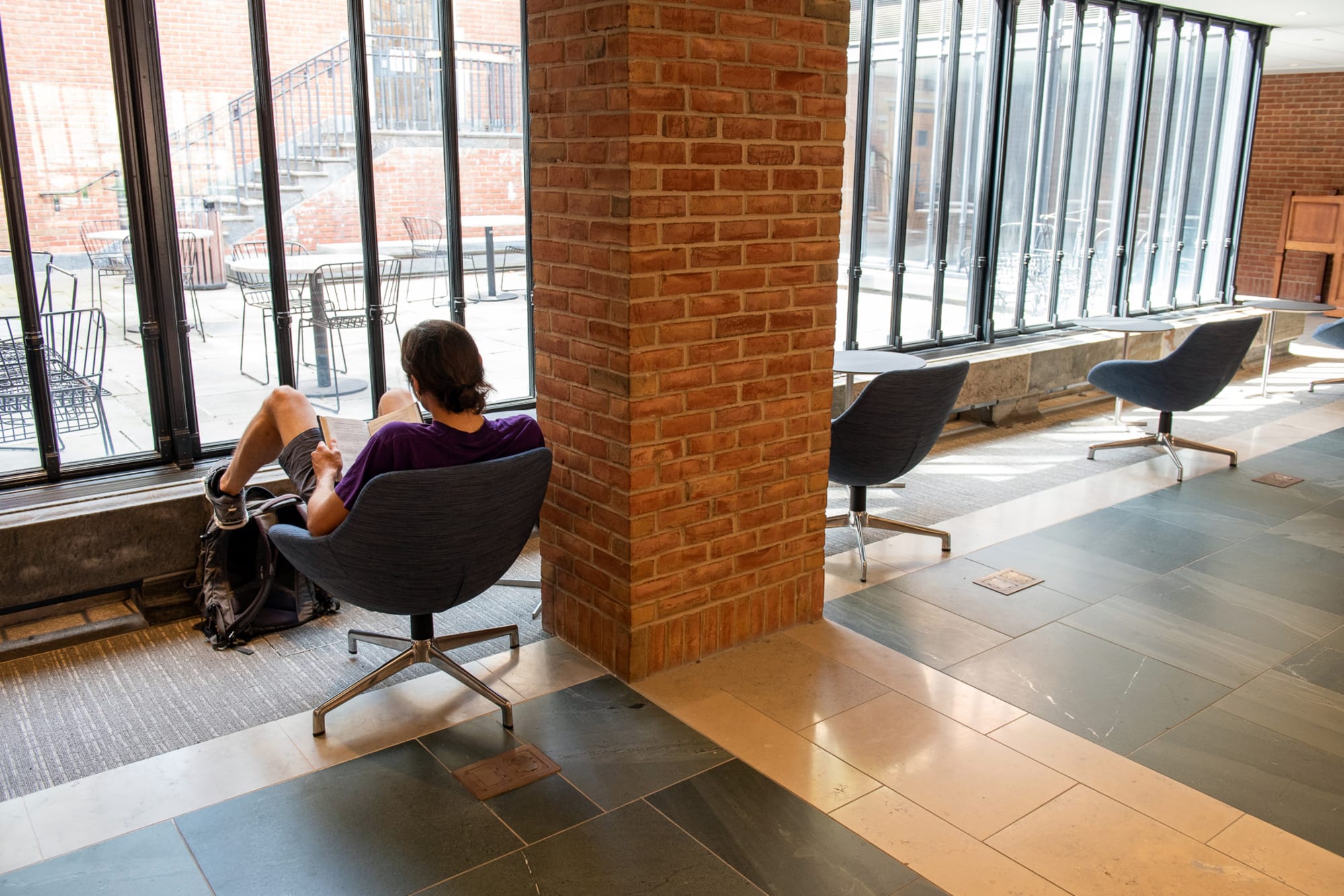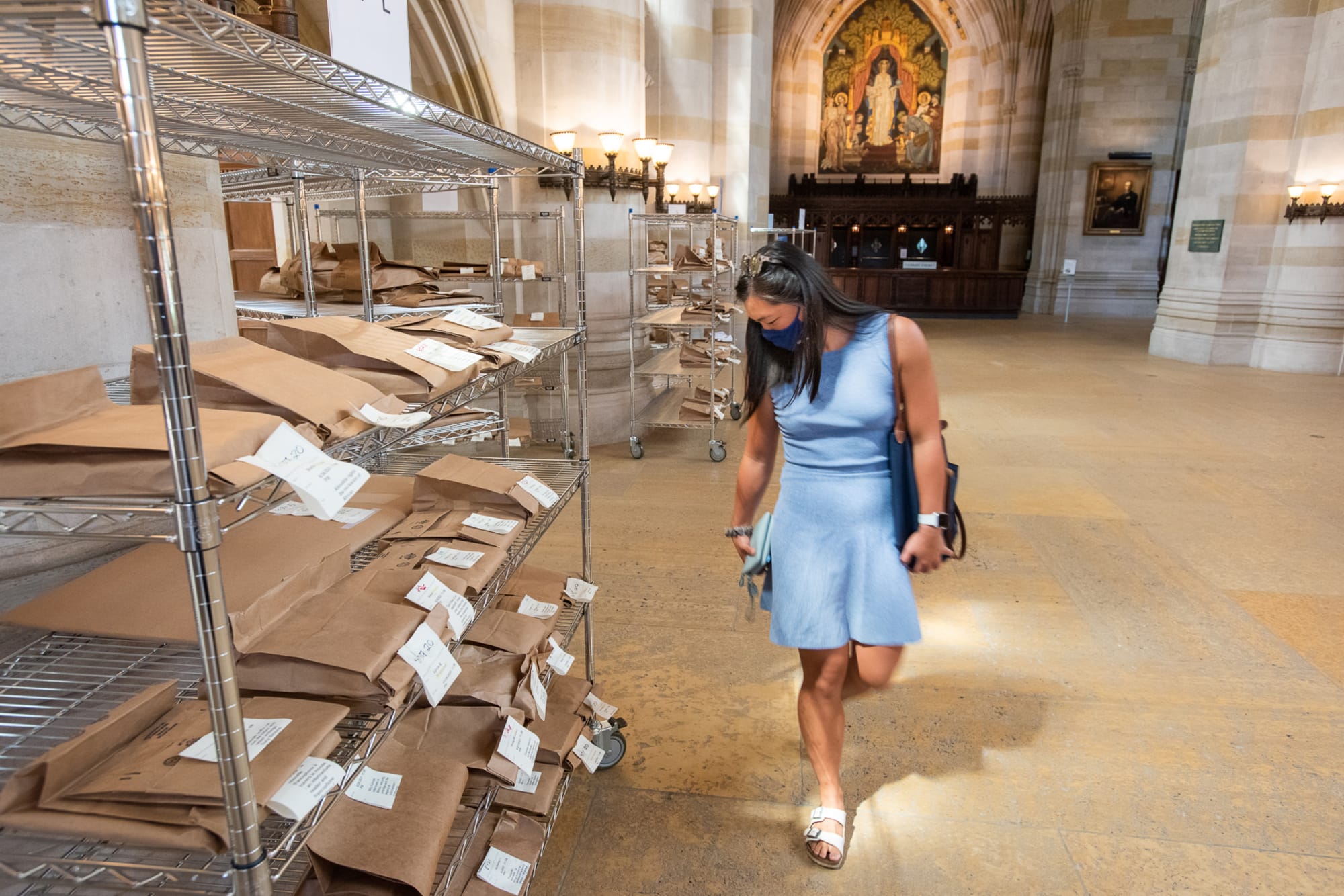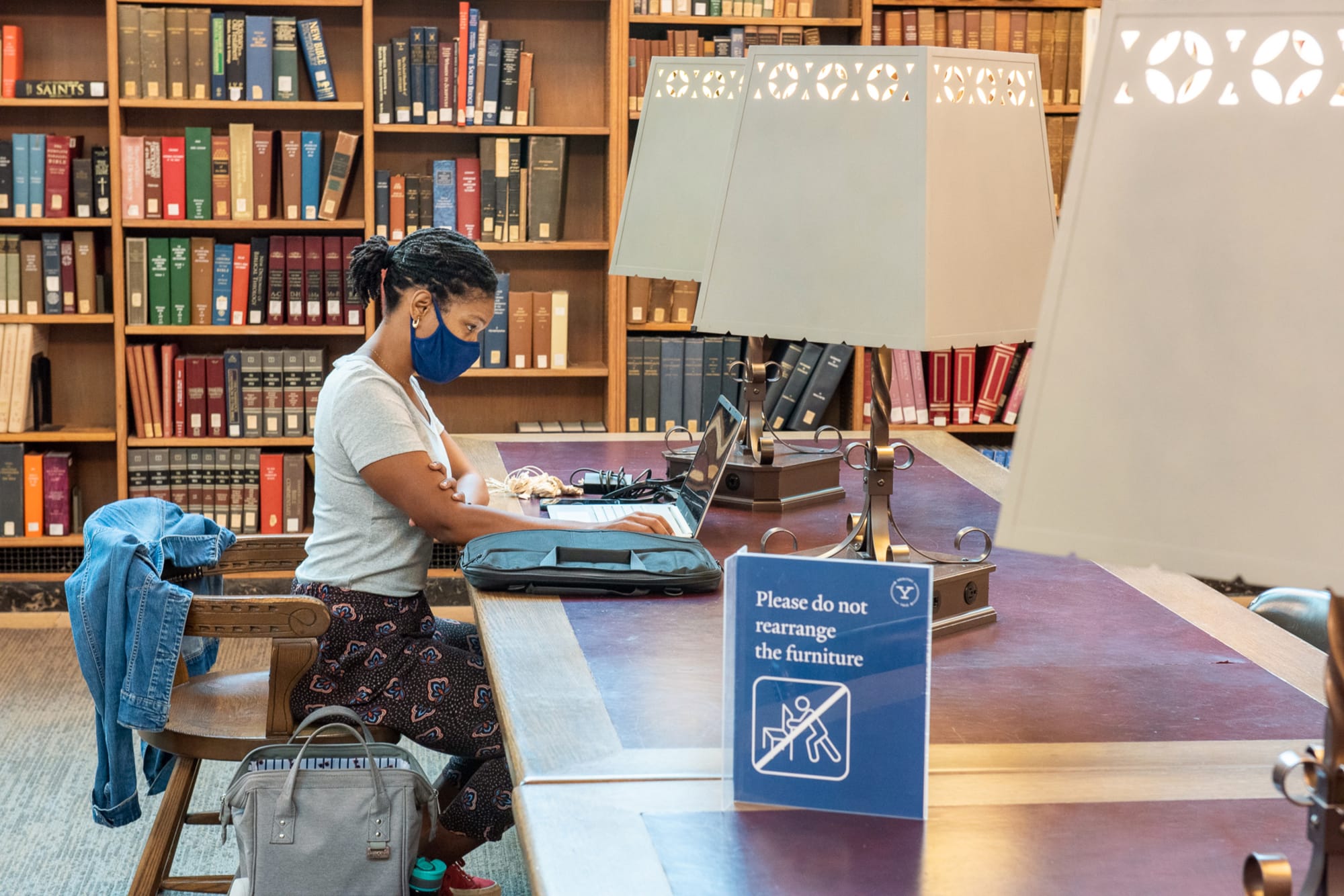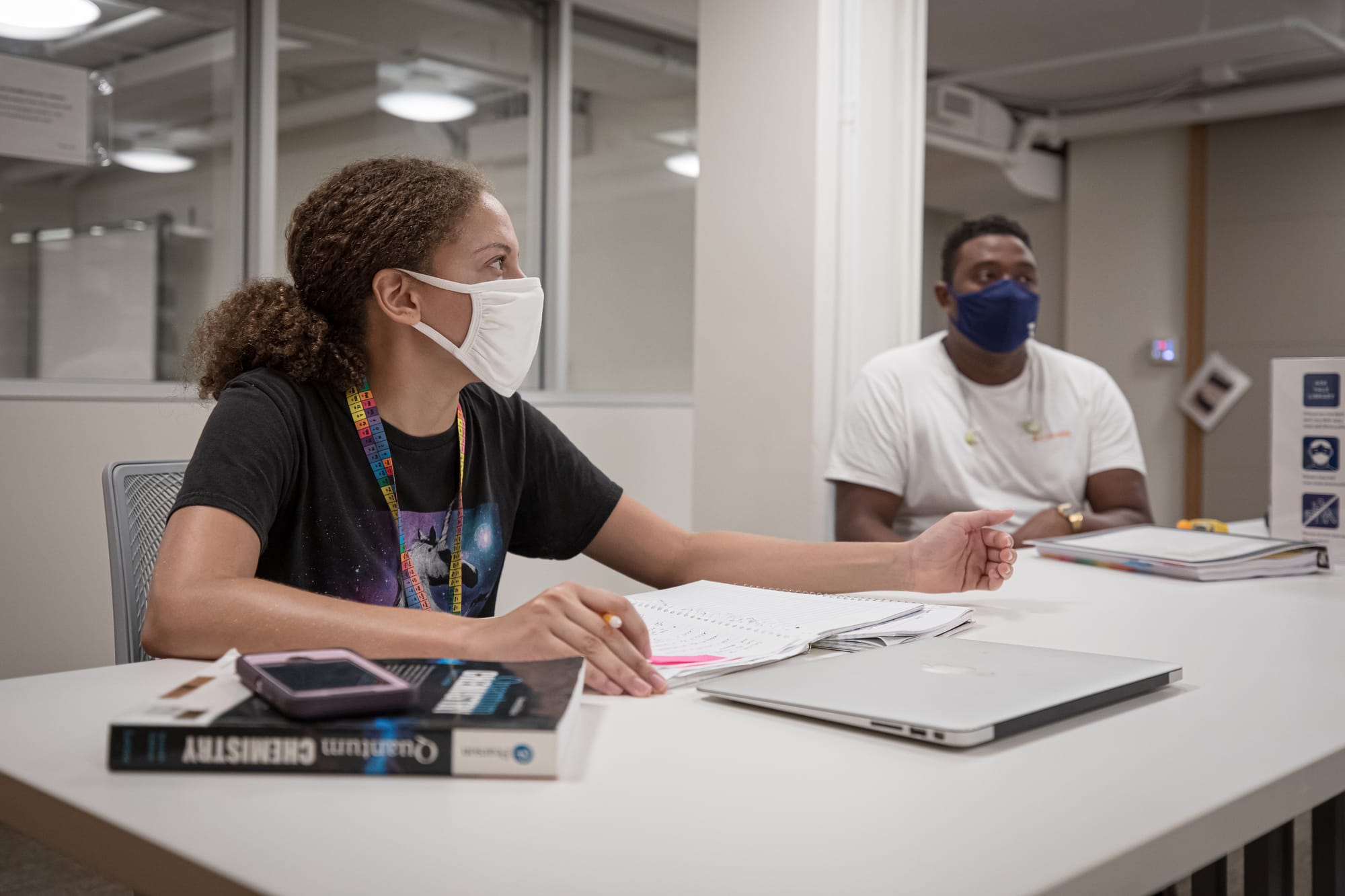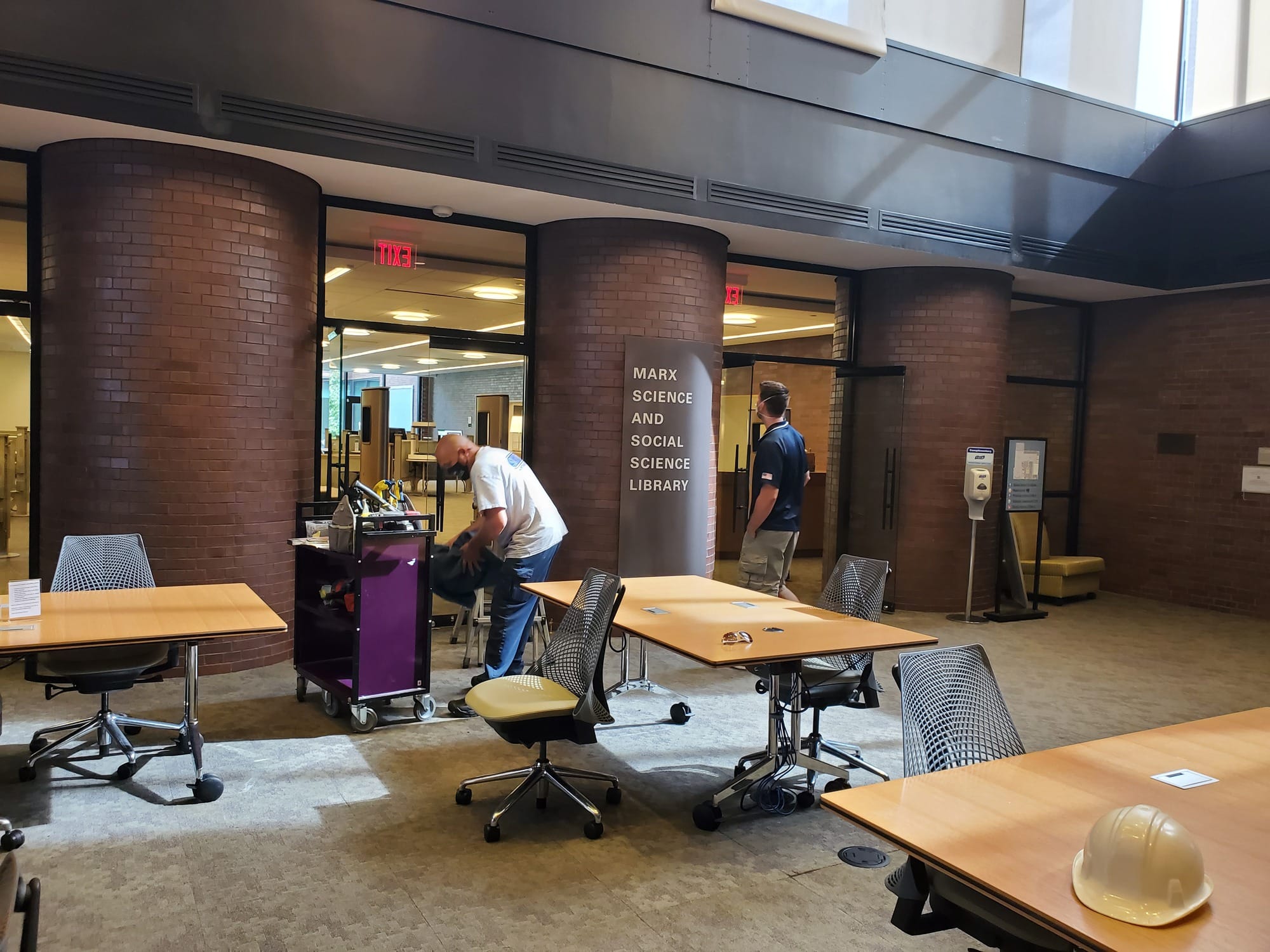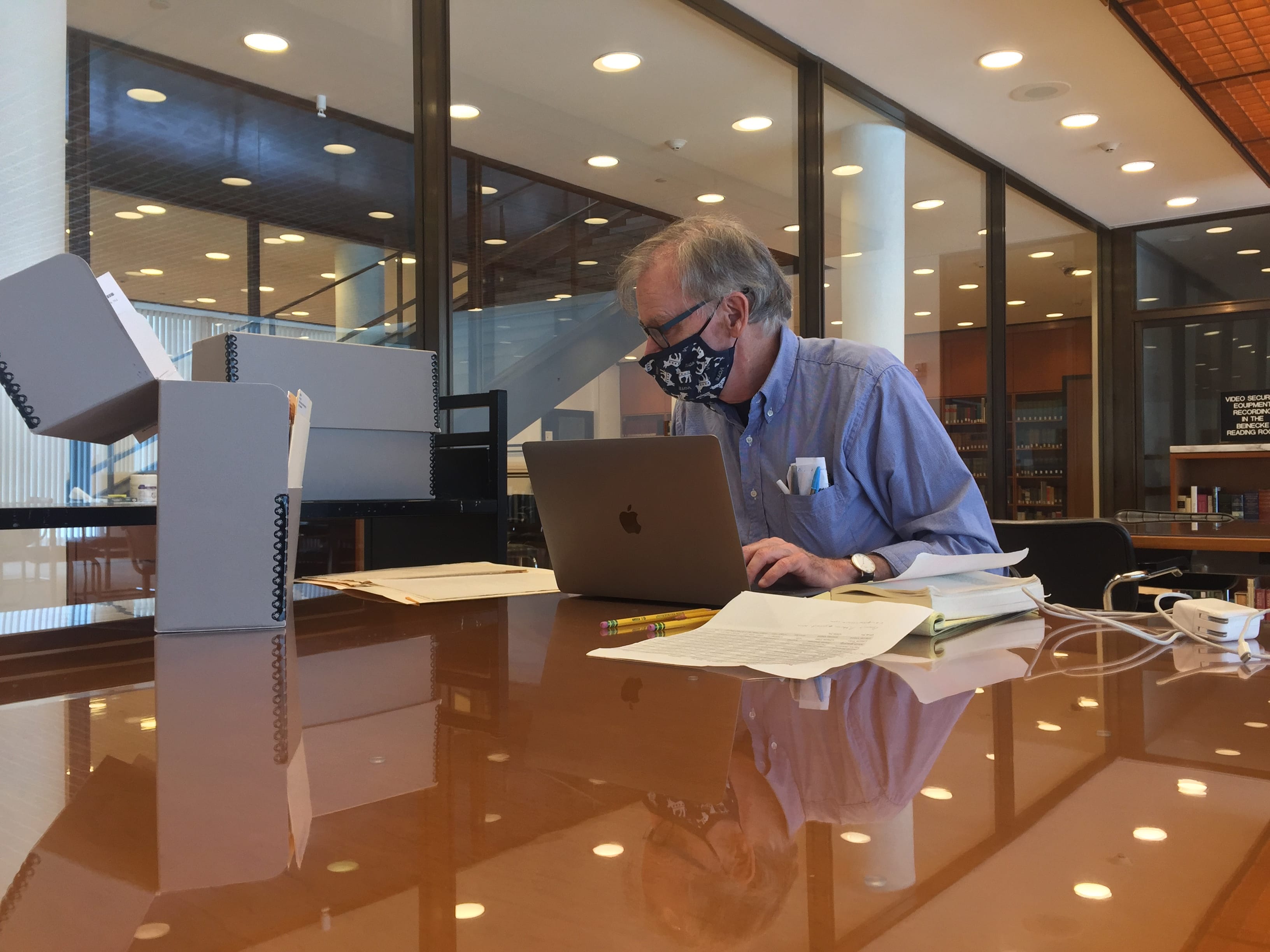Nehna Young, a first-year master’s degree student in the Yale School of the Environment, walked into Sterling Memorial Library on Monday, Aug. 31, and asked where she could find a reading room. Because the campus was closed by Covid-19 when she was accepted to Yale, it was the first time she had entered Sterling’s high-arched Gothic nave.
“I wanted to get out of my dorm just to explore the libraries,” she said before settling down with her laptop in the Starr Reading Room. “They’re beautiful spaces, and I’m grateful they are open again.”
Variations on this scene took place across campus, as Yale University Library welcomed back faculty, students, and staff after the nearly six-month campus shutdown. In addition to Sterling, five libraries reopened on Aug. 31: Bass Library, the Divinity Library, Gilmore Music Library, Haas Arts Library, and Marx Science and Social Science Library. Cushing/Whitney Medical Library reopened Aug. 24, in sync with the Medical School’s earlier semester start. The Lewis Walpole Library in Farmington, Conn., will open for Yale researchers on Sept. 21.
“It’s thrilling to be here,” said Barbara Rockenbach, the Stephen F. Gates ’68 University Librarian, who stood in the nave with Provost Scott Stroebel to greet arriving patrons at a pandemic-appropriate distance. “In one way we never closed. We’ve been here all along supporting students and faculty online. But there’s something unique about the way that library spaces and physical collections help to shape a sense of community. I think the libraries are going to be more important than ever for students this semester.”
For Rockenbach, the day had special significance. After joining Yale Library in her new role on July 1, she spent her first two months working with library staff mostly over Zoom. “It’s exciting to be in the space and meet some staff, faculty, and students in person,” she said. “It feels like I am finally, officially, starting in this position.”
For returning library users, many changes were visible. Library seating has been reconfigured to support physical distancing, masked staff assist patrons at service desks outfitted with Plexiglass shields, and signage prompts users and staff to comply with public health guidelines.
In Sterling, the upper-floor reading rooms remain closed for the fall to reduce elevator use and stairway traffic. The L&B room, with its cozy niches and nap-friendly sofas, is also closed because its venerable mechanical systems cannot be adapted to new ventilation standards. In the nave, a row of metal bakers’ racks is packed with brown bags of books, pre-checked-out to library users as part of a new contactless pickup service. (For users who would prefer not to come in at all, the library now introduced new delivery options to residential halls, graduate dorms, and home addresses.)
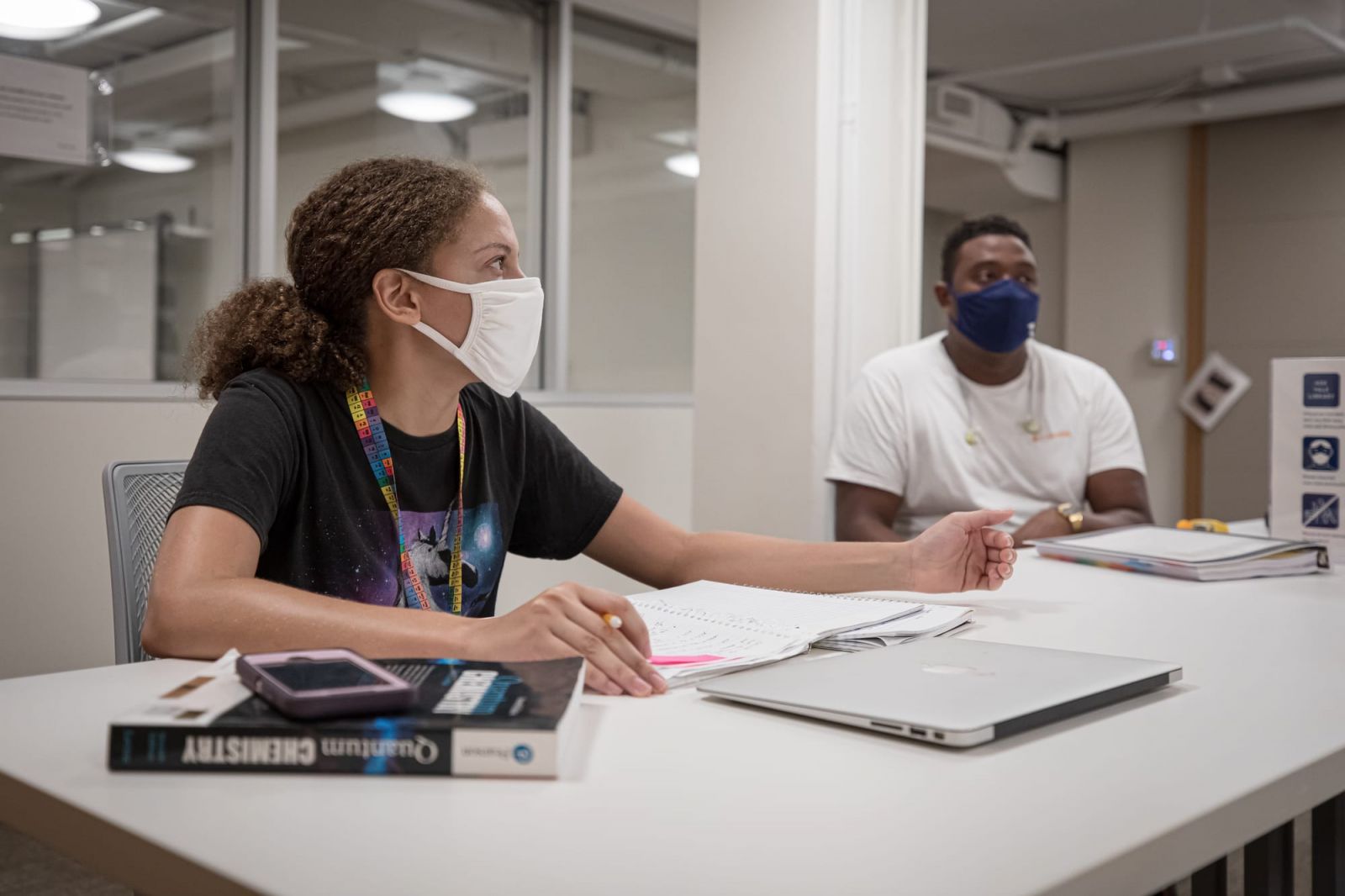 At Marx Science and Social Science Library, students work in a study space reconfigured to support physical distancing. Photo by Andrew Hurley
At Marx Science and Social Science Library, students work in a study space reconfigured to support physical distancing. Photo by Andrew Hurley
On the lower level of Kline Biology Tower, the library formerly known as the Center for Science and Social Science Information celebrated another new beginning. Last March, the University announced that the center would have a new name and a new endowment, established by a four-generation Yale family and spearheaded by Nancy Marx Better ’84, chair of the University Library Council. On Monday, workers mounted a brand new sign over the library’s entrance, reading Marx Science and Social Science Library.
Most special collections reading rooms reopened Monday, allowing Yale researchers access to the library’s vast collections of primary sources, rare texts, and other artifacts by appointment. At the Beinecke Rare Book and Manuscript Library, David Blight, Sterling Professor of History, of African American Studies, and of American Studies, resumed his research in the James Weldon Johnson and Grace Nail Johnson papers. At Manuscripts and Archives one researcher browsed the papers of Yale graduate and Supreme Court Justice Potter Stewart, while another delved into boxes of University records. In the Arts Library Special Collections reading room, a student examined the library’s type specimens collections as research for a letterform design course.
With most teaching taking place online and Yale College students still in quarantine, there were far fewer students and faculty in reading rooms and study spaces than usual on the first day of classes. Staff were busy, though, testing out new workflows and protocols, working to clear backlogs of returned materials, and processing scanning and pickup requests.
Some important library functions, such as processing book purchases and library conservation, are resuming their on-campus work gradually in September. In keeping with the University’s pandemic plan, staff who can work at home will continue to so this semester. And many library services, including research consultations, library instruction, and workshops will be offered online only this fall, to minimize face-to-face interactions and ensure equitable access to library resources and services for remotely enrolled students.
Yet, after months of planning and preparation by scores of staff, Yale Library’s reopening day marked a significant milestone achieved.
“Among the things that make Yale great are its libraries and collections,” Strobel said. “There is no way we can have a university that’s functioning as a leader in research without access to these resources. We are grateful to all the people who have done extraordinarily hard work to make this important transition possible as we continue to open the university.”
Visit the Yale Library reopening page for updates and frequently asked questions.

